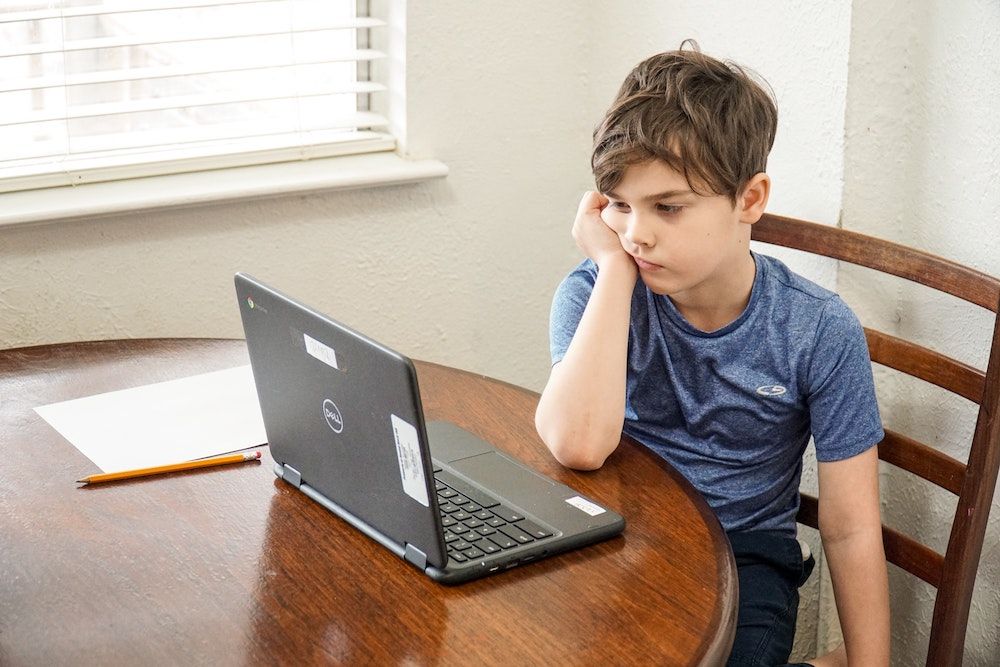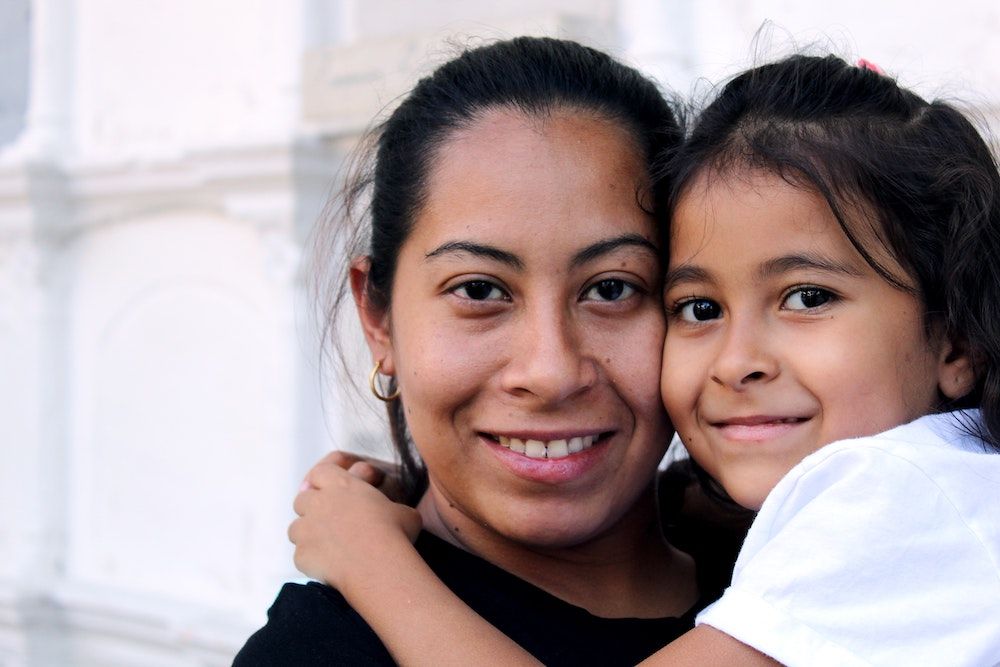Having concerns about child mental health covid impact for ages 6-12? If you want to see a summary of research on how covid has introduced changes and impacted children aged 6-12, and what you can do to support them, this article is for you.
The first section of this article explores covid impact on children aged 6-12, while the second part reviews what can be done to manage and mediate these unfortunate factors. Solutions and resources for emotional health and coping skills, managing behaviors, getting through virtual school, and safe technology management.

To summarize from the CDC’s website:
https://www.cdc.gov/mentalhealth/stress-coping/parental-resources/index.html
- Changes in their routines (e.g., having to physically distance from family, friends, worship community)
- Breaks in continuity of learning (e.g., virtual learning environments, technology access and connectivity issues)
- Breaks in continuity of health care (e.g., missed well-child and immunization visits, limited access to mental, speech, and occupational health services)
- Missed significant life events (e.g., grief of missing celebrations, vacation plans, and/or milestone life events)
- Lost security and safety (e.g., housing and food insecurity, increased exposure to violence and online harms, threat of physical illness and uncertainty for the future)
In addition to the pandemic impacts listed under the previous article for children up to age 5, most kids aged 6-12 have been impacted by virtual schooling formats. Let’s explore what that might mean for them.
Firstly, virtual formats are probably not appropriate for many of these children, especially those aged 6-8, and those with special needs such as speech delays or attention deficit and hyperactivity disorders. These are formative years for how children conceptualize school, their relationship with school, and their self-concept about how successful they can be at school and their ability to participate with adequate comfort. These concepts once formed can follow them through their entire school experience and even into the workplace.
Many of these children did not get a chance to develop skills needed to stay focused, sit still, listen, and process language. Parents needing to work either in or out of the home can be very challenged and frustrated by children who are not staying still and in synch with virtual schooling, distressing attachments and relationships with parents. Such children are vulnerable to learning maladaptive patterns of behavior such as defiance or learned helplessness. Add to that having missed critical instruction that would have made them ready for the next grade level.
Then we have the problem of distractions and content available on internet connected devices. Many kids today are adept at bypassing parental controls to access YouTube videos, video games, and vast amounts of content that is inappropriate for their age. It’s like an alcoholic trying to quit while living in a bar offering free drinks 24/7. This places them at-risk for developing unhealthy addictions and exposure to content that can be disruptive to their social and emotional development. This too, like failing to sit still and attend when they simply have not developed these capacities can lead to a negative feedback loop whereby their lack of skills at avoiding temptation result in messages from the environment and parents that they are bad.
The virtual environment also leaves them at risk for cyber-bullying and various types of predators. Finally also at-risk are the children living in situations where good internet and connecting devices are unavailable. This includes children in rural areas, low-income families, and a disproportionate amount of ethnic minorities. Some of these children are also in situations where a parent can not stay home to supervise or may not have competent English language to assist with schooling.
Some of the children in this age-range can also develop anxiety about returning to in-person school. They may have fears about getting ill, dying, infecting a vulnerable family member, or being socially disconnected and not able to rekindle, form, and maintain friendships so they have a sense of belonging.
What you can do about child mental health covid impact ages 6-12:

You may suspect your child’s self-esteem has suffered under the covid impact on children aged 6-12. If they have had difficulty sitting still and focusing on virtual school, they are at-risk for concluding they are bad, or lacking ability to succeed in school. Here are some tools and strategies for building healthy self-esteem for your child:
ADHD child’s self-esteem This article reviews ways to build self-esteem and is relevant for children not diagnosed with ADHD
The above document explores self-esteem, where it comes from, signs of low self-esteem, strategies for building self-esteem.
Self-talk, self-esteem, self-control course In-depth video course indexed and broken into short lessons with supporting documents and templates to use in teaching children and adults strategies to succeed.
Empower with measures they can manage and implement to reduce risks such as social distancing, handwashing, and wearing masks.
Spend time with them playing games, exercising, exploring outdoors, creating arts or crafts, and reading.
Talk with them about how they are feeling often, and be frank about your own fears and concerns, and model what you are doing to manage your own stress, such as talking back to your fears with positive thoughts and focusing on what you are grateful for. Have them draw or paint how they are feeling as younger children often lack awareness and skills to verbally express new feelings.
Consult with a knowledgeable counselor.
Create a Family Media Agreement:
Digital Diet for Children and Teens A guide for healthy technology management.
Create socialization opportunities and help them stay socially connected in whatever ways you think are safe.
Create and follow structured routines for daily activity.
Remember that children aged 6-12 when faced with a crisis are comforted by a nuts and bolts mechanical explanation of how things work and what will happen. At the younger range of 6-8, children’s normally developing primary need is for adult approval. Lots of it! Good job, you figured it out, you can decide, daily gestures of approval and affirmation.
At the higher end of this age range, getting closer to 12, children need to begin processing a crisis with age-peers. Having said that, it is a good idea to monitor these conversations from a distance, as at this age some children may advance exaggerated or misinformed ideas that are better corrected.
Teach emotional coping skills. Learn positive discipline and behavior management techniques. Find more information below:
Signs of child mental health covid impact ages 6-12
There can be signs that a child’s sense of security and safety has been impacted.
Changes in eating or sleeping habits.
Used to sleep alone and now refuses.
Becoming increasingly clingy and fearful of separation from one or both parents.
Bad dreams.
Excessive worry.
Poor school performance or school refusal.
Headaches or stomachaches.
Increased irritability, aggression, non-compliance, tantrums, withdrawal, or crying.
Regression- talks like a baby or acts like a familiar animal, becomes unpotty-trained.
Difficulty concentrating or remembering.
If you see changes in the behavior of your younger child that concern you, don’t hesitate to reach out for help. Consider a session or few with a counselor experienced with children of the same age. This can be conducted virtually for advice in how to assist them in processing and recovery. Remember that parents can model good self-care and self-reassurance.
Breaks in continuity of care can result in missed opportunities for well-checks to pick up on delays in developmental milestones and provision of therapy services such as speech, occupational therapy, and physical therapy. To make up for gaps in childcare due to closures, parents not able to remain engaged with children at home can reach out to others for support. A co-op with neighbor(s), extended family, or small at-home daycare or respite are examples. This can be especially important for parents of children with special needs. To support discontinued therapies when children continue to have needs, consider a phone chat or virtual session with the therapist to get instruction in therapeutic activities implemented at home that foster language, motor, social, and emotional development.
Missed life events– weddings, reunions, births, holiday extended family gatherings impact this age group too. They may be missing group gatherings to celebrate life events such as birthdays or create opportunities to grieve. Remember that for children a few weeks away from someone they saw more regularly can seem like a very long time and be experienced as a loss. Consider implementing regularly scheduled Facetime, Zoom, or Skype meetings with participants in your child’s life who become unavailable for in-person visits.
What about covid impact on children with pre-existing mental health and learning disorders
Children with pre–existing mental and physical disability are at utmost risk
https://www.ncbi.nlm.nih.gov/pmc/articles/PMC7330593/
Student Loss of Joy and Motivation in Covid Restrictions
Are children’s mental health needs being addressed during covid?
https://www.usnews.com/news/health-news/articles/2021-03-04/childrens-mental-health-crisis-could-be-a-next-wave-in-the-pandemic
https://www.luriechildrens.org/en/blog/childrens-mental-health-pandemic-statistics/
School closure impact on children’s’ mental health
https://www.thelancet.com/journals/lanchi/article/PIIS2352-4642(20)30109-7/fulltext
https://jamanetwork.com/journals/jamanetworkopen/fullarticle/2783714
https://www.thelancet.com/pdfs/journals/lanchi/PIIS2352-4642(20)30109-7.pdf
https://www.medrxiv.org/content/10.1101/2021.02.10.21251526v1
Access and utilization of mental and behavioral health services:
I hope you found this article Child Mental Health Covid Impact Ages 6-12 useful.